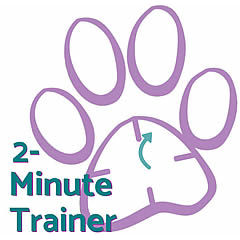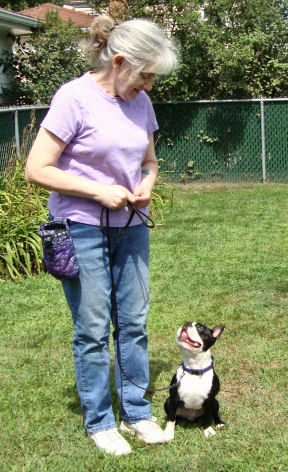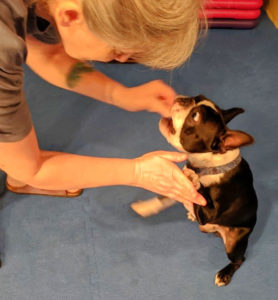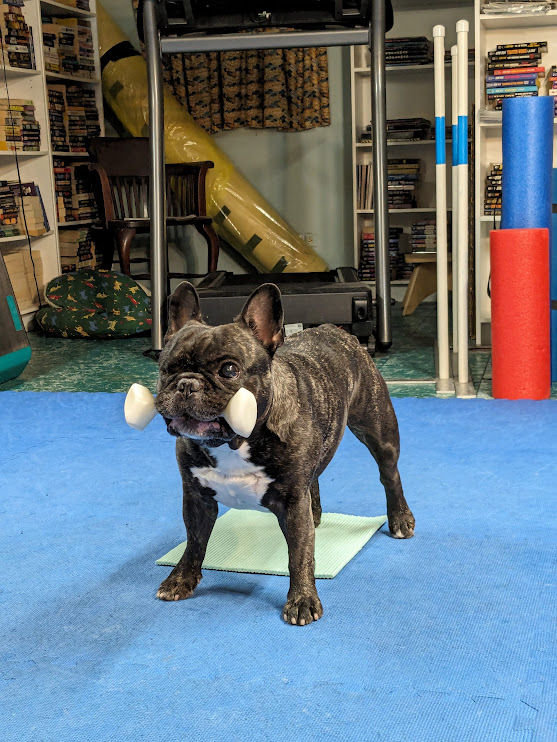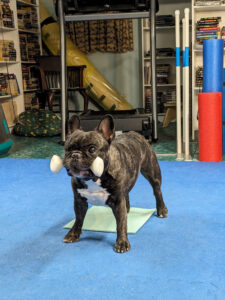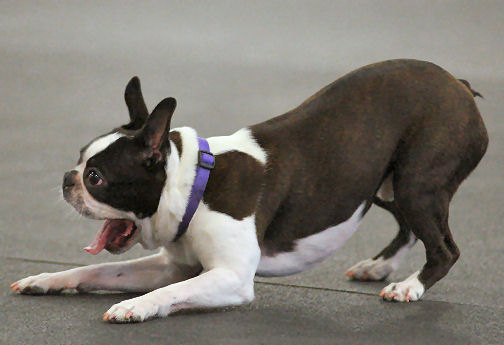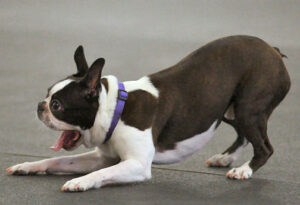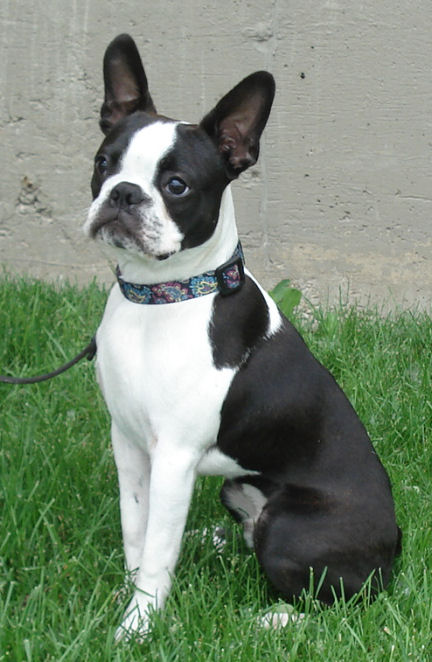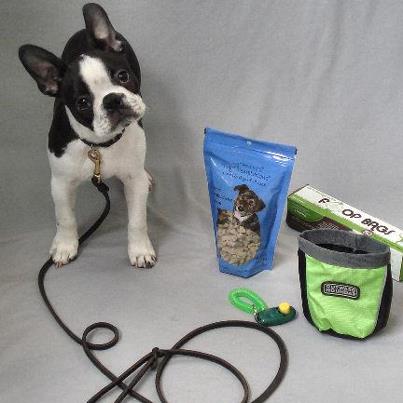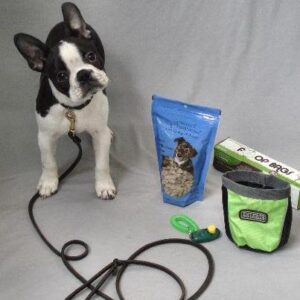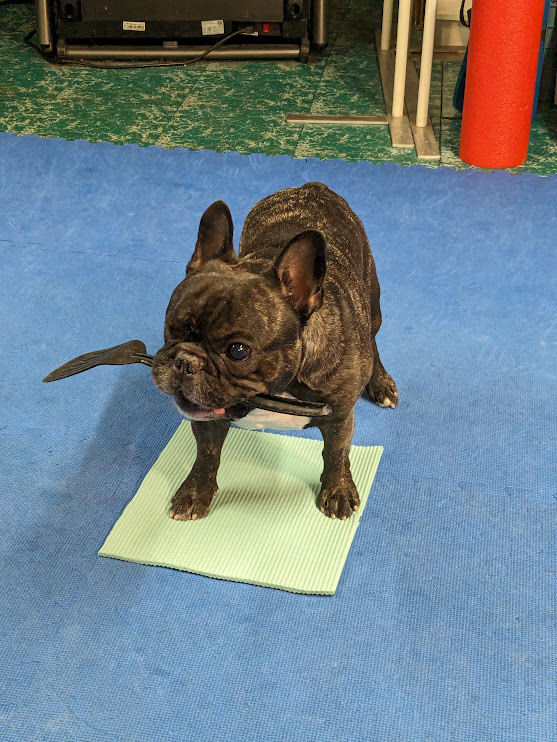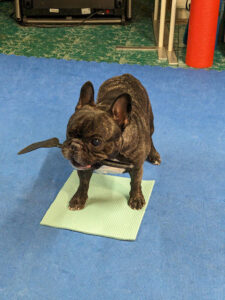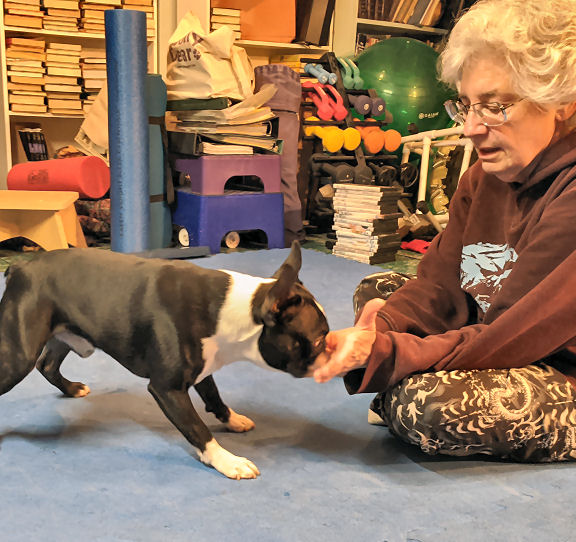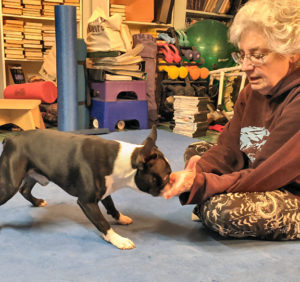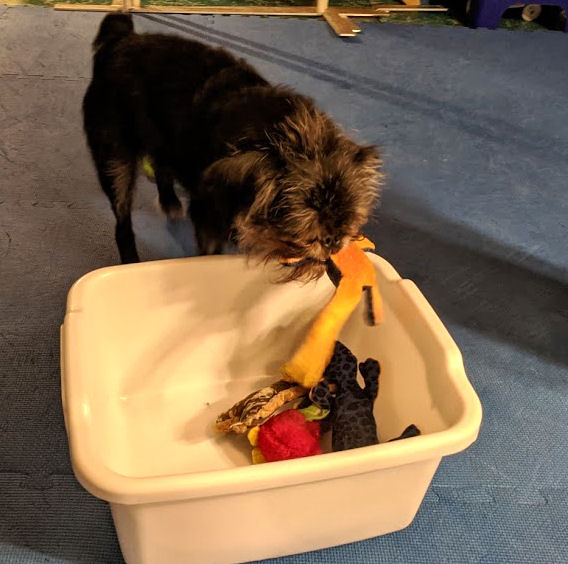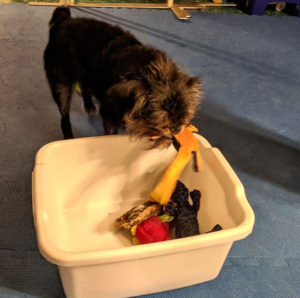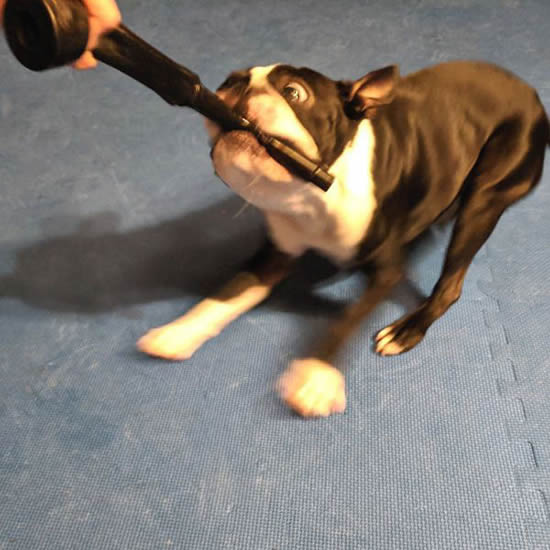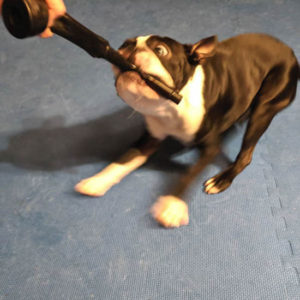The “Automatic Sit!” is one of those games where you have to work a bit to make it fun. Remembering that your dog feeds off your energy – if you think it’s boring, it is. If you think it’s another fun game you can play together, it will be.
What is an “Automatic Sit”? When you’re walking with your dog, every time you stop your dog sits. It’s simple. It’s easy. And it’s a habit that most people don’t bother to develop for their dogs. But it’s an important one, especially for city dwellers. If your dog sits every time you reach a curb, or a driveway, you know you have time to check traffic before moving on. Just that simple. And possibly life-saving.
First things first
Does your dog know the word “Sit!”? Most people will swear they do. But most people are wrong. Keeping in mind that dogs learn things in context, do a little test of your dog’s understanding.
Your dog probably knows “Sit!” when you’re face-to-face. And you have a treat in your hand. You probably lift the treat up as you say “Sit!” Or you may simultaneously bring the treat up while you push on your dog’s butt. If any of that is familiar, you need to take the test.
With your dog at your side, your hands empty of treats, and hanging straight, say “Sit!” to your dog. If they do it, that’s great! Your dog really knows the word. If they don’t, you’re allowed to look at your dog’s butt, but not repeat “Sit!” If they still don’t do it, you need to expand your dog’s understanding of “Sit!”
Easy peasy
Getting your dog to understand “Sit!” is simple. But you have to actually do it. Dogs learn by the timing and placement of rewards. If you enter a room and your dog is sitting, say “Good Sit!” Give them a treat. That’s it. If you say “Sit!” and your dog instantly does it, reward! Keep repeating the word “Sit!” when your dog’s doing it.
Dogs are capable of understanding hundreds of words. The catch is you have to teach them. Unlike toddlers and children, dogs can’t pick up vocabulary by overhearing conversations or understanding context. Expanding your dog’s vocabulary requires your conscious decision to teach them. They’ll pick it up quickly, given the opportunity.
Once your dog’s “Sit!” is rock-solid, it’s time to take it a step further with the Automatic Sit!
Step at a time
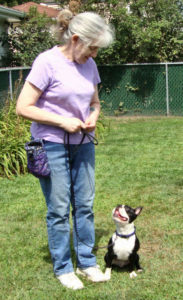
This part’s easy, too. For one of your 2-Minute Training sessions, with your dog at your side, take a single step. Tell your dog “Sit!” when you stop. Take another single step. Say “Sit!” when you stop. Rinse and repeat. Single steps for just a minute or two.
If your dog doesn’t do it immediately, or seems confused, just wait. Give them a chance to think. If the halt-step wedding-march is confusing for your dog, there are a couple things you can do to clear it up. Always start moving with the foot closest to the dog. This is an Obedience hack. If you move the foot closest to the dog first, they know they’re supposed to move with you. If you move the opposite foot first, they know to stay. Dogs are smart.
You can also cue them when you start moving and when you stop. “Let’s Go!” even for the single step. And “Halt! Sit!” when you stop.
Always useful
That’s really all there is to teaching your dog the “Automatic Sit!” When your dog is doing great in your 2-Minute session, take the behavior with you on your next walk. At first, remind your dog to “Sit!” when you stop. And “Let’s Go!” when you start moving. Sitting at stops will become your dog’s good habit quickly.
